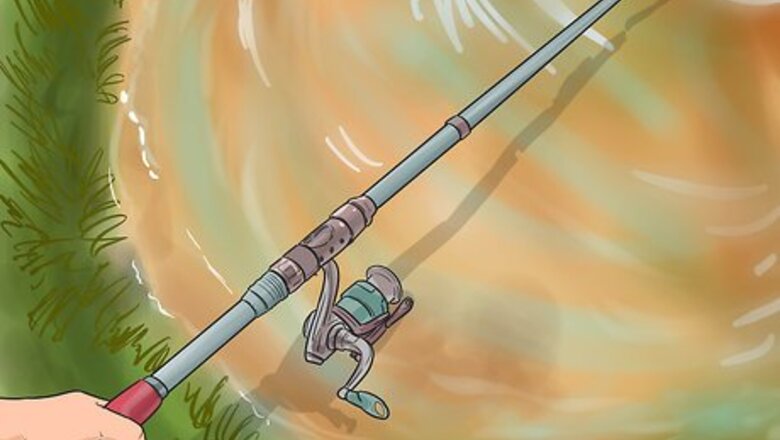
views
X
Trustworthy Source
US National Park Service
Agency responsible for the maintenance and promotion of national parks and monuments
Go to source
Catching carp is similar to catching many other fish, but there are some specific techniques you can implement to maximize your chances of catching one.
Getting The Right Equipment
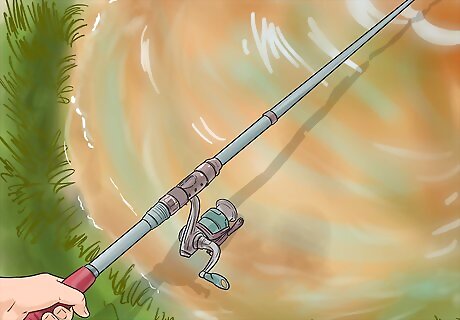
Choose a composite, carbon fiber, or e-glass fishing rod. Graphite rods can shatter under the pressure of a bigger fish, so unless you are fishing for smaller carp, you should try to avoid them. There are various brands on the market, but you should do your research, read customer reviews, and consider your budget if you need to purchase a different rod. Carp are very hard pound-for-pound fighting fish. The lb/kg test of your rod should increase as the size of the fish you’re targeting increases. If you’re fishing for small carp, a graphite rod with a 3 lb (1.4 kg) test curve will work. Common carp can grow to be 60 pounds (27 kg) and require a good rod if you hook one. A 7–12 feet (2.1–3.7 m) rod will will give you enough flex if you need to reel in a larger fish.
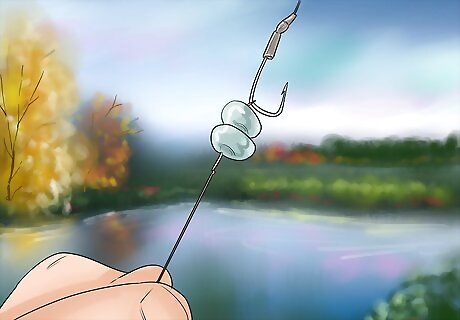
Obtain sweetcorn or boilies for bait. Carp love sweet corn out of the can, and it can make for some of the best bait if you’re fishing for them. While any corn may work, sweet corn contains added sugars and salts, as well as critical amino acids which make it ideal food for carp. Boilies are fishing bait made of fish or milk proteins, eggs, and grains, and are an alternative to corn. The bright color of the corn also catches the carps' attention. Some other carp baits include carp pellets, hemp, tiger nuts, maize, chickpeas and maggots.
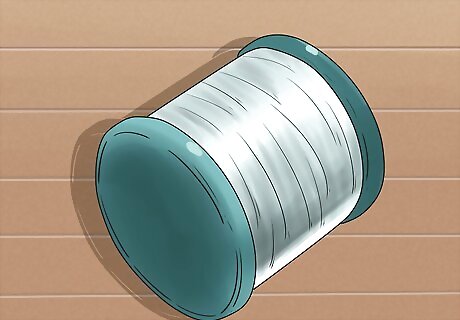
Get a strong monofilament or braided line. If there’s a chance you’ll bag a bigger carp, you want to make sure that your line is strong enough to carry the load of a large fish. Determine the average weight of the carp you’re fishing for, then buy a monofilament or braided line with a tensile strength that will be able to carry its load. Tensile strength can usually be found on the box, or on the side of the product. Put a mono or fluorocarbon leader at the end of the braided line and tie it on with a palomar knot. This should prevent fish from being deterred from your bait or lure. Monofilament also enables you to tie reliable knots in your line which is important for certain types of fishing. A nylon monofilament line is a single strand line that has near-neutral buoyancy and the ability to stretch and absorb the shock of a larger fish.
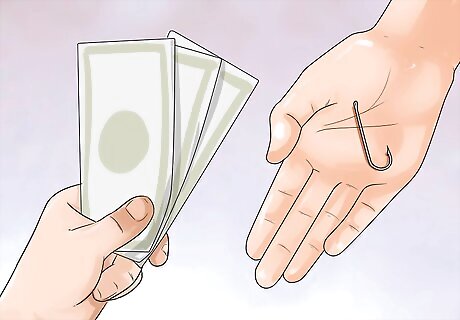
Purchase barbed hooks to keep the fish on the line. Here, bigger hooks are not better as carp are highly adaptive and will typically nibble at bait before taking the whole thing in their mouth. Carp are able to see, taste, and smell a larger hook, so they won't usually try to bite one if it's big and obvious. Make sure to check that barbed hooks are legal where you are fishing, as they are restricted in some fishing areas.
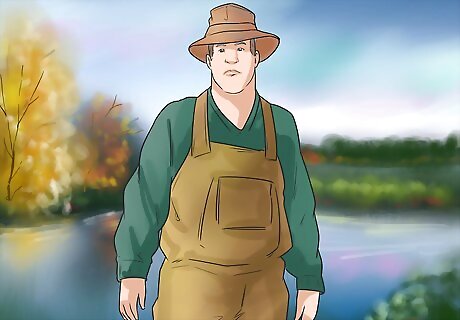
Make sure you have comfortable clothes. When choosing the right outfit, make sure to choose clothes that are weather appropriate. There’s a good chance that if you’re fishing in carp heavy waters, there will be a lot of mud and algae in the area. For that reason, it would also be a good idea to get a good set of boots so that you don’t get trench foot. It’s important that your clothes will work for all times of day. Sometimes the temperature drastically changes when it starts to get dark outside. Trench foot is a dangerous condition from keeping your feet wet and results in swelling, numbness, and pain.
Setting Up Your Rig For Float Fishing
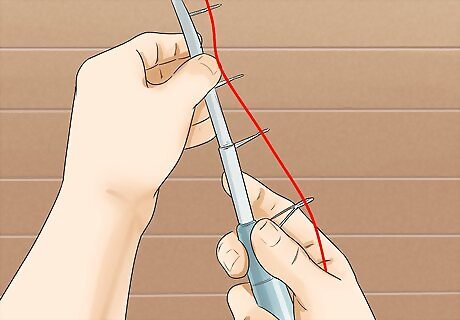
Feed your line through the rings of your rod, leaving slack to the line. The amount of slack to leave all depends on the depths of the waters that you are fishing. For carp, you want to make sure that your bait is on the bottom of the waterbed because that is where carp like to feed. When fishing in 5 ft (1.5 m) waters, leave at least 5 feet (1.5 m) of slack. The extra line is required for the float, weight, and hook.
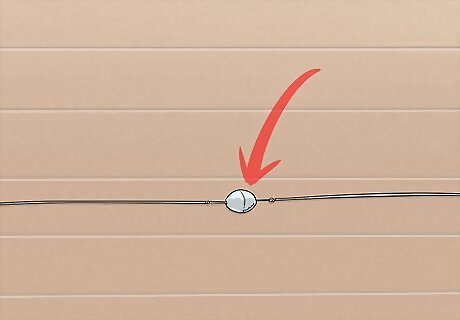
Add a stop knot, or float stop to the top of your line, above your float. The float will move up on your line when in the water until it’s stopped by your rod. For that reason, adding a stop knot or float stop will make it so you can regulate where the float will stay on the end of your line. Leave plenty of space between your float and your knot so that your bait will be on the bottom of the lake or river you're fishing in. Where you put the knot depends on the depth of the fish, but as a rule of thumb it should be 2-3 arm lengths above the swivel. You can create a stop knot out of rubber tubing by feeding your line through the center and then feeding the line through it again.
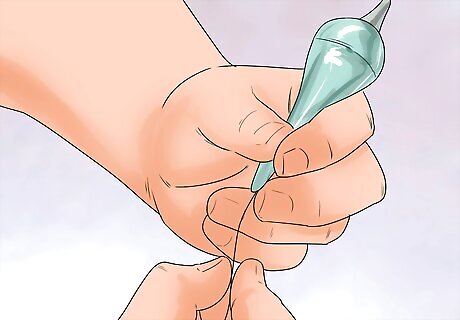
String the line through the float. The float will have a hole in the middle. Take the slack from the end of your line and string it through the float. While they aren't necessary for carp fishing, floats enable the angler to tell when there are carp are nibbling at his bait. Because of how sensitive they are, it would be very hard to determine this without one. A float will help you indicate whether you have something on your line as well as give you control over the depth of your hook. Waggler floats are commonly used as floats for float fishing.
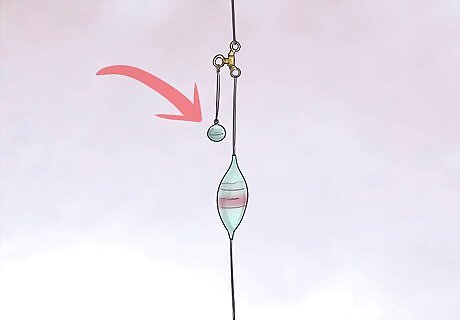
Add a weight under the float. Weights weigh down the line so your bait can reach the bottom, where carp feed. It will also make sure that your line isn’t going downstream with the current. Your weight should be right above your swivel, around 5–9 inches (13–23 cm) away from your hook. If you notice that you’re line is traveling too far from where you cast it, add a heavy weight to the end of the line.
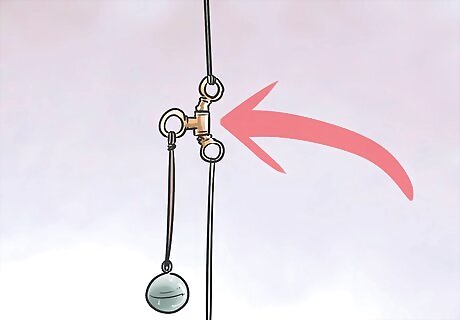
Tie the swivel to the line. A swivel allows your hook to move in a 180-degree radius which will prevent your line from twisting and breaking if you hook a carp. This is especially important because carp are known to twist and turn to escape. There are 3 different types of swivels and include barrel, crane, and ball bearing swivels. Ball bearing swivels are the best quality because they can handle the highest load.
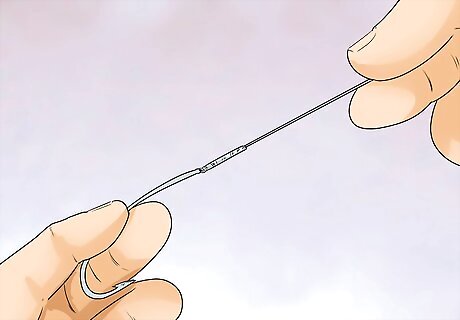
Cut a long piece of line and attach the hook. The idea is that the hook and line will be on the bottom of lake floor. Because carp are bottom dwellers, you want to make sure to make the extra piece of line long enough so that the hook is at the bottom with 7 inches (18 cm) of slack. You can calculate this by figuring out the depth of the water you’re fishing, then adding 7 inches (18 cm) to the slack below your stop knot. Some carp anglers have a smaller hook that hangs off a larger hook as a decoy, so if the fish tries to eat around the larger hook it will still get on your line.
Catching the Fish
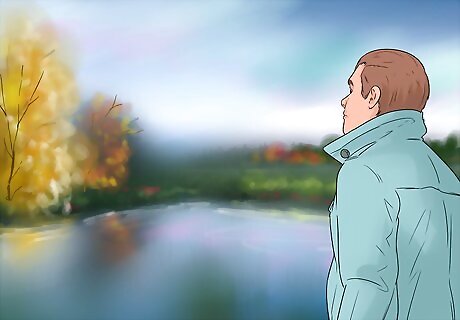
Find an area that’s filled with plant life and vegetation. Carp will feed on nearby vegetation and the insects and other animals that feed on it as well. These are ideal areas to set up when fishing for carp. Carp prefer shallow water during hot weather and deeper water during cold weather. Make sure to find a place where you can comfortably sit for a couple of hours. Carp are known to be very touchy and require patience to catch.
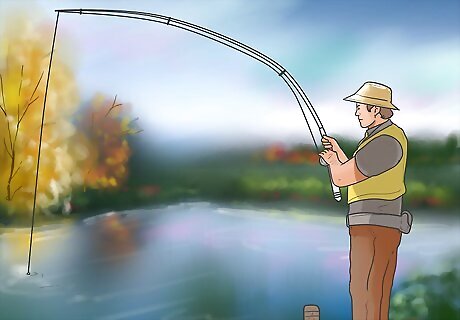
Cast your line into the water. If you see a school of carp feeding, you don’t want to cast directly on top them because they scare easily. A better idea is to cast ahead in the current, to where the carp may swim to to feed. The closer you have your weights attached to your float, the easier it will be to cast your line into the water.
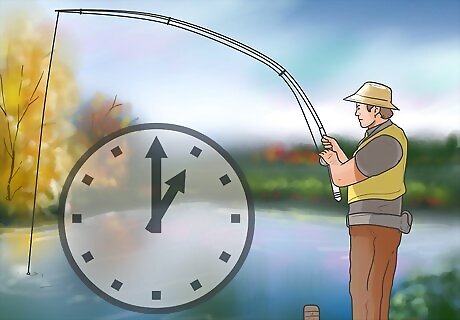
Sit back and watch your float to see if any carp are biting. Carp are intelligent fish and will eat around your hook. In some cases, they will take the entire bait before you even know they are under you. Watch your float carefully. If it starts to bob up and down, it’s possible that a carp is nibbling at your bait. It’s easy to confuse water current with a fish biting on your bait, so before you reel in make sure it’s a good bite. Your float will be quickly submerged if there is a carp on your hook.
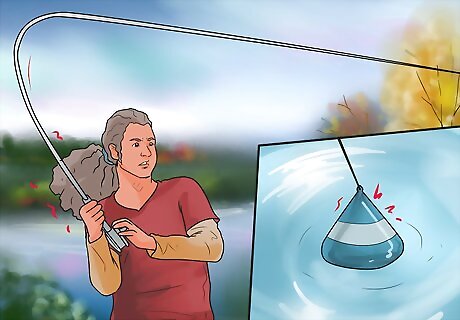
Use the lift method if carp are eating your bait but not biting. Sometimes your float will lift out of the water rather than becoming submerged, and this is a big indicator that carp are eating around your bait. For this method, wait until your float lifts out of the water, then jerk back your arm in an upward motion and start to reel it in. Doing this will hook any carp that has a hook in its mouth, but has not taken your bait. This may result in reeling in nothing some of the time, especially if you’re not used to float fishing. If this doesn’t work, try jerking your arm in a sideways motion to keep the bait from being pulled out of the fish’s mouth.
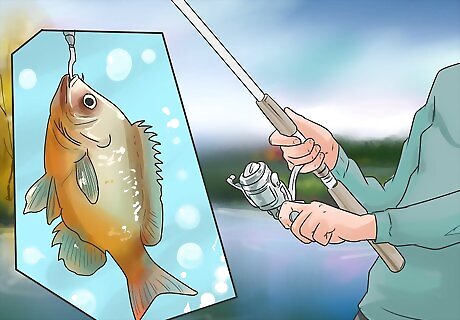
Reel in the carp once it’s hooked. Once the carp takes a real bite out of your hook, hold onto your pole tightly and smoothly pull it in an upward direction. Work the reel up in a smooth motion to bring the carp closer to you gradually. Allow the carp to tire itself out before pulling it out of the water. Use your rod to pull the fish downstream, which will cause it swim upstream and fight the current, tiring it out faster.
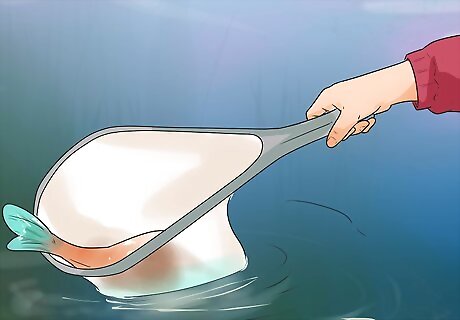
Use a net and scoop the carp out of the water. The best way to safely pull a carp out of the water is with a net. Make sure that the carp is tired already, and place the net under it in the water. Grab the carp by putting one hand on the bottom of its belly and the other safely secured on its tail. To prevent yourself from getting cut by its fins, make sure to wear gloves. Once you have the carp, remove the hook from its mouth. For carp that thrash after you catch them, apply a wet dark cloth over its eyes so you can remove the hook. Don't pick up the fish by its mouth as you would with a bass, because you could easily damage it.



















Comments
0 comment